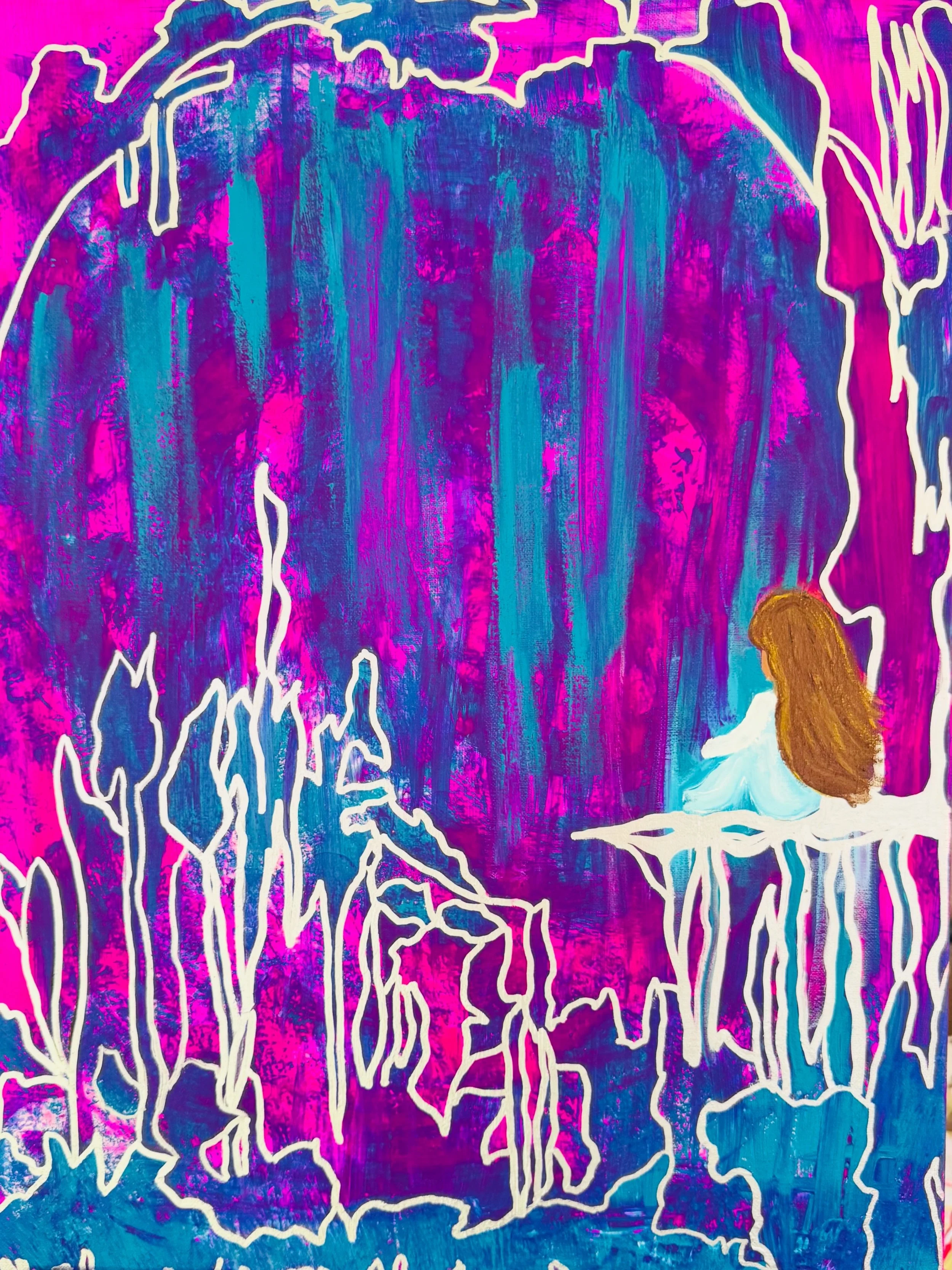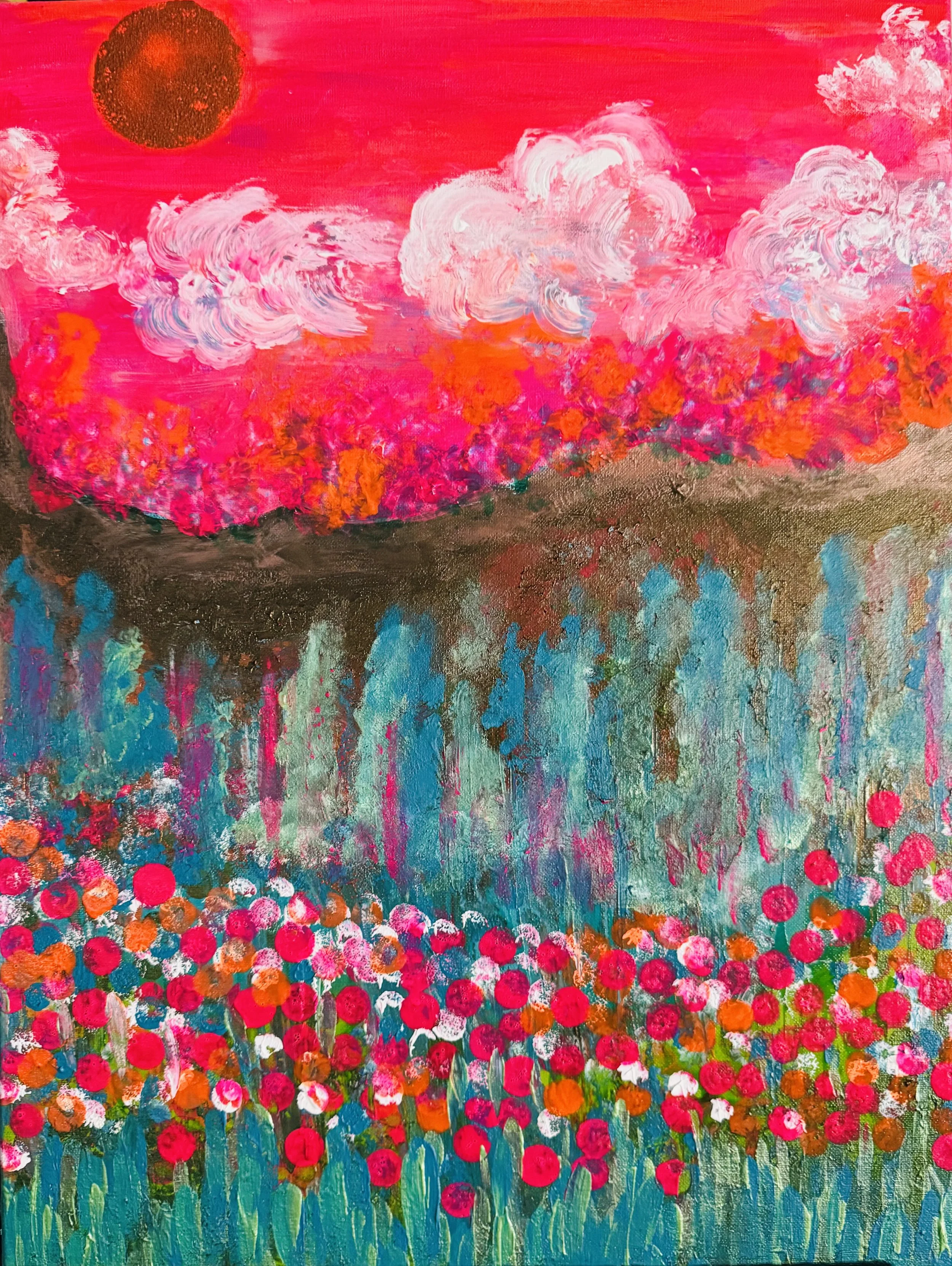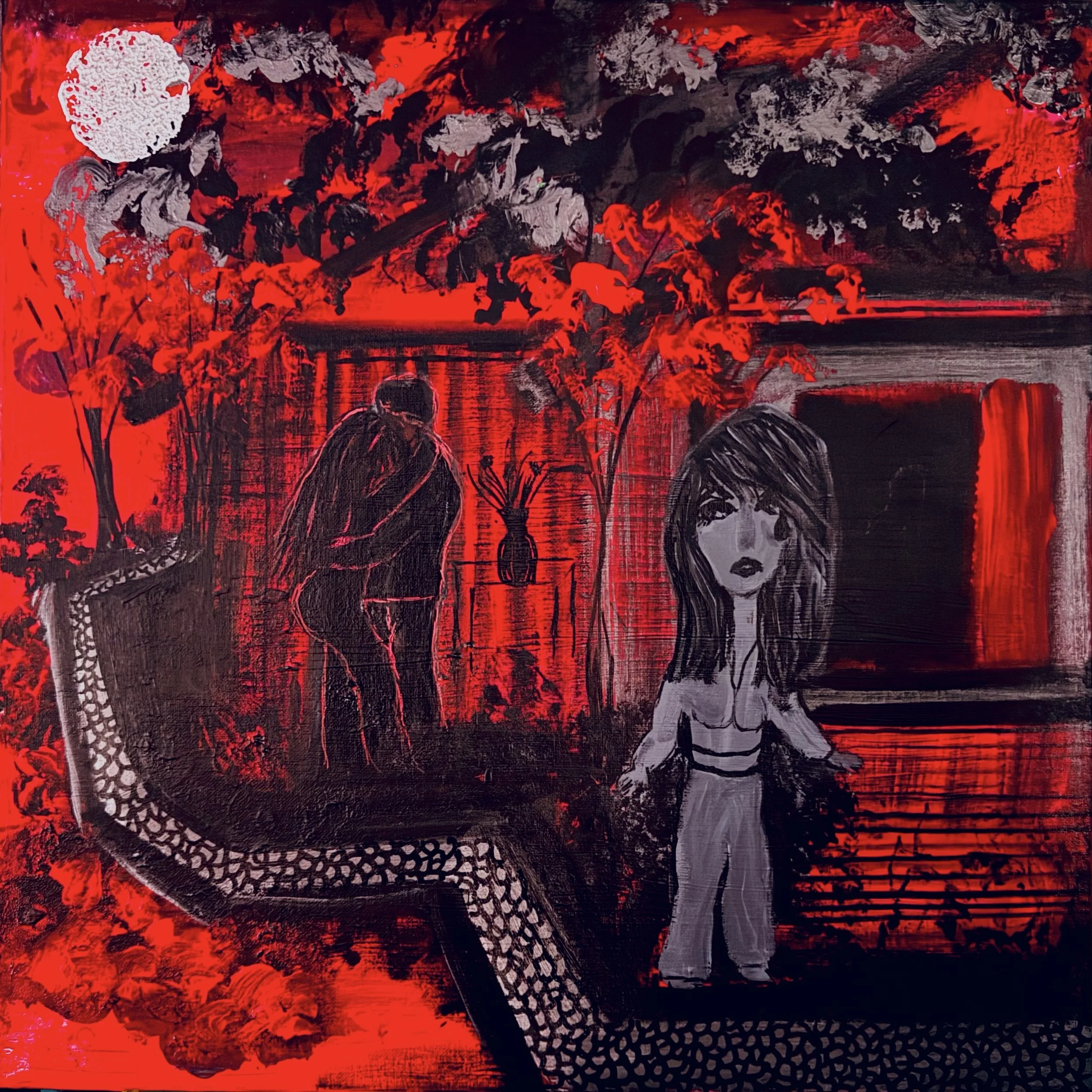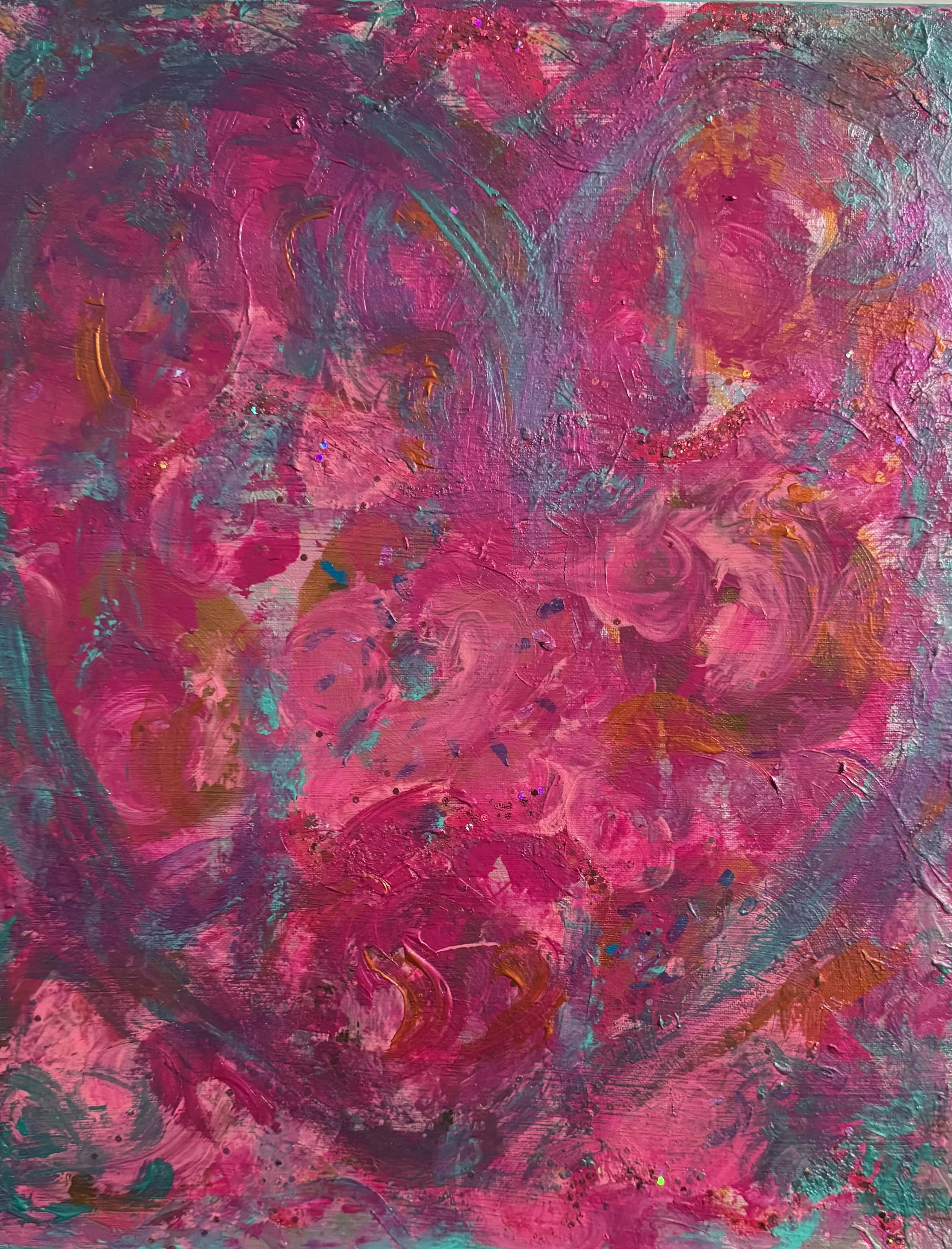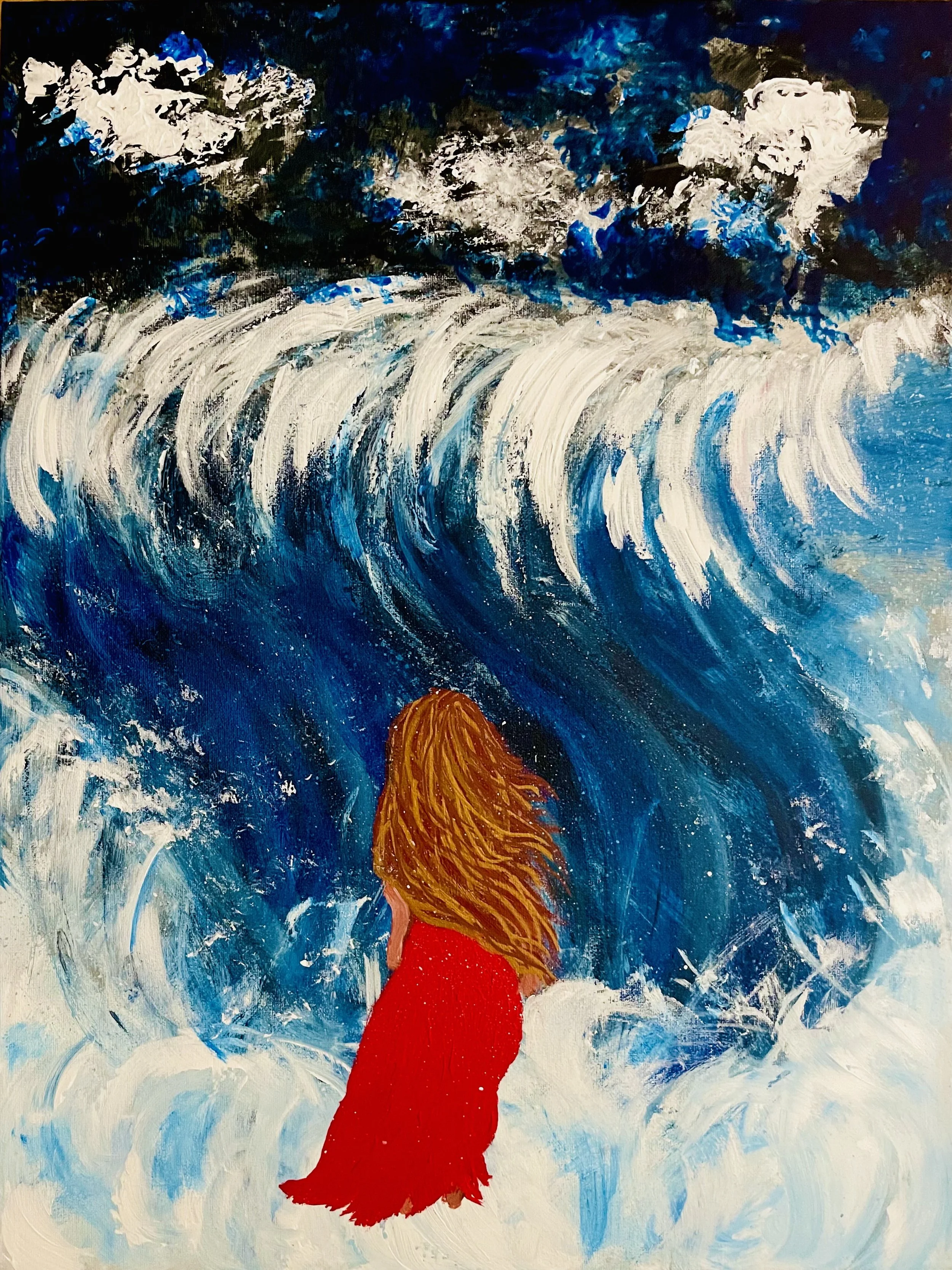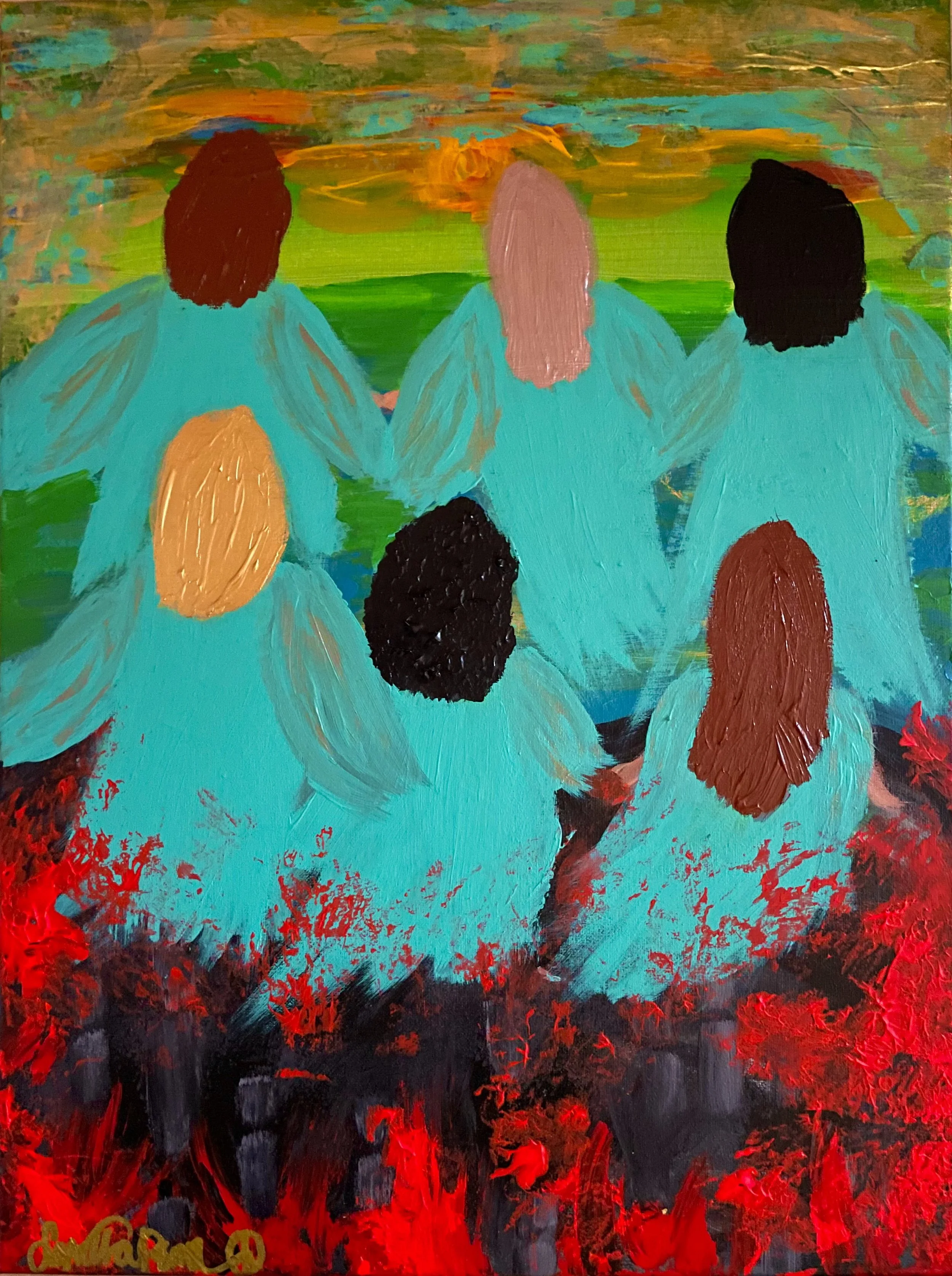Loretta Pena
www.artpiecebypeace.com
Instagram @artpiecebypeace
Loretta Pena is a self-taught artist based in California, United States. She began her journey after working for a fast-paced company more than 20 years. The stress from working for this company was so severe she had an anxiety attack that caused her to rethink her future. She eventually began therapy, parted ways with her employer and started painting which she now uses as her coping mechanism. Loretta has said many times "you really do not see yourself until your therapist holds a mirror in front of you." She gives credit to both painting and therapy for saving her life. Her paintings will take you on her life's journey. Loretta's paintings are at times dark and emotional to happy and inspiring. She also paints to express her current mood and her views on world topics. There is no subject she will not touch, and is unafraid of criticism because her paintings are created from deep within her soul; her soul being her security blanket, if you will. She has once said being self-taught feels free and independent, without worries of color representation and style and this is evident in her work. Most of her paintings are created with acrylic paints on canvas. The tools she uses are brushes, scalpels and anything she feels will give her the effect she needs such as plastic wrap, paper towels, fabric swatches, her fingers, etc. She loves to paint and feels grateful to be on her journey and hopes that her creations will mean something to someone someday.
Loretta, your journey into painting was catalyzed by an intense personal crisis, a moment when the world seemed to fracture. How do you negotiate the space between trauma and creation, and how do you know when a wound has become ready to be translated onto canvas?
There is no space between the trauma I endured and my creations. Art has become my go to place for comfort. My trauma did not begin with the anxiety attack that fueled this art journey. That event was the last straw. The trauma, however, started many years before. My earlier life was nothing but trauma. I was bullied at school from kindergarten until the age of 10. My home life was horrific. I had parents who did not love each other. It was a forced marriage. They fought everyday and I was their referee for as long as I could remember. Being the eldest daughter I knew a lot more than I should. I tried to shelter and protect my younger siblings from the chaos. Though my father passed away when I was 12 years old, his passing resulted in me taking his place. My mother did not know what to do, as my father was much older than my mother and he did everything for us including the cooking and cleaning. She refused to do anything for us because she hated her life. I became my siblings' second parent when he passed. At 12 years old I learned to cook, clean, pay bills and help with my siblings' homework. I am telling you this because when I started this journey, I had so much material in my heart that I painted day and night. I don't ever have that feeling of not being ready to tell my story. I am unafraid to share it with the world or let anyone in. I feel I am an open book and I am unashamed of my past because it is what made me who I am today.
In your work, we often witness a tug of war between chaos and calm, between the visceral and the meditative. To what extent is this duality a reflection of your inner world, and how consciously do you construct this emotional architecture?
I could honestly say everything I create is a reflection of my inner world, as you say. My inner world is much calmer now since I started painting, but every now and then I will flashback to a painful time that usually results in art. The tug of war you see is a mix of my past and present. Every painting I have created is something I have experienced. My paintings are of me thinking out loud. I am a very emotional person and I find painting soothes me. It reminds me of how beautiful my life truly is.
You’ve described being self-taught as liberating, free from the constraints of academic dogma. In a contemporary art world still largely obsessed with pedigree and institutional validation, how do you define mastery?
First of all, I am not an artist by any means. I have not taken any classes and as you know I do not have a degree in art. I have the utmost respect for artists who have a formal education. I am just a person, who started painting, is maybe good at applying color and translating experiences onto a canvas. They don't have a title for someone like me so artist is what they say I am but am I really? No. I am not. It is not fair to the artist that has studied art, for me to say I am an artist. It is rather uncomfortable too, I must admit. On the other hand it is so liberating to me to be able to paint what and how I want, not because I am a rebellious person, but because I don't know any better. I don't know the rules so I don't follow them. I don't know what each color represents. I honestly don't want to know either. I think that would hinder my creativity. I am just the same little girl who once used crayons and construction paper to create art only this time, I create paintings from my experiences, bad and good.
Many of your tools—plastic wrap, scalpels, even your own hands—feel like extensions of your emotional state. Do you consider your process to be performative, and if so, how does the act of making become part of the message itself?
I use various tools/items to create the effect I need in order for the viewer to feel the emotion I am trying to convey. The tools are somewhat extensions of my emotional state in that sense, but I would not consider my process as performative. I am uncomfortable with being watched or even videotaping myself while creating. I feel videotaping myself create is somewhat disrespectful to a true artist. My technique is mine. Whether an educated artist uses some of the same technique, I don't know. All I know is that my "tools" help me express the painting's message.
Your paintings carry an autobiographical weight, yet they often speak to universal themes such as grief, hope, and resilience. How do you maintain that delicate balance between the personal and the collective without diluting either?
When I have an idea for a painting I try to create something that the audience could feel. It is always important to me to create something that is authentically me. Both my world and the subjects of the outside world are equally important to me and so I always try to give all of myself to each creation, universal or personal. My honest thoughts and emotions are poured into all subjects equally.
In works like “What Is Left?” and “Time to Let You Go,” you confront vulnerability not as weakness but as radical honesty. Do you think art has a responsibility to challenge societal discomfort around emotional expression, particularly in women’s narratives?
I don't think art has the responsibility but I do believe it has the ability to start conversations. That in itself is powerful. I feel that my experiences are relatable to some and shocking to others. The only difference is I am unafraid or unashamed to speak to the audience about it. When you have lived a life like mine, you've already experienced the ultimate shame, desperation, discomfort and rejection. Creating art that others could relate to is a comforting experience. I am realizing that there are many people out there just like me.
Your practice was born outside of traditional art discourse, yet your work aligns with existential giants like Munch and Kahlo. How do you see your own visual language evolving as your internal landscape changes?
I am very humbled by your words. That is quite a compliment that I am not sure I deserve. I already see a big difference in my earlier work compared to my work now. At the beginning of this journey, my heart was broken. I was broken. It was evident in the work I created. I often cried while painting and still do. The only difference now is that I cry less. My current work is that of the past and present but the message is now hopeful. My earlier work was that of emotional storytelling without really expressing my thoughts on the future. Part of my internal landscape is still broken, and always will be, but through art I am able to put a lot of it in the past so you will see work that is of optimism and joy because I am in a much better place now.
There’s an almost spiritual cadence to works like “The Rise” and “Troubled Waters.” Do you believe your art occupies a sacred or metaphysical space, and if so, do you feel like a conduit for something beyond yourself when you paint?
I definitely feel there is something that takes over me when I create especially when I feel overly passionate about the subject. I dig deep within myself and at times, I don't even know how the idea came about or how the painting I just created was finished. I do know, however, that it was a beautiful heartfelt experience. There was a time in my life shortly after my father passed away that I found myself alone in a hotel room. My mother took us on a mini vacation to help us cope with his passing. My mother and siblings were out enjoying the day and I decided I wanted to stay and she allowed me to. I was 12 years old at the time. I cried alone in the room and prayed and begged for things to get better. At that moment, I felt that my life was going to get better. Hope was everything to me. I never gave up hope because something told me not to. Ever since that day, my life was spiritually motivated. I am not an overly religious person nor do I go to church but I do believe that God watches over me. I am not saying that ever since that day, all was better because it definitely was not. I am saying that there is something out there that possesses me to keep going and pushing through life in all that I do. That to me is the reason I am able to create art and continue on this journey.
In an age increasingly dominated by conceptual minimalism and digital aesthetics, your paintings offer a return to tactile emotion and raw texture. Do you view this as an act of resistance, and how do you situate yourself within or outside current art world trends?
I am not trying to resist the trend. I really did not give thought to any trends. I am only creating art as I know how. Honestly, it is only recently that I learned what minimalism meant in the art world. My art is definitely different from other creators. I know this by seeing what the artists are doing on Instagram. I don't know where I stand in the art world as far as trends. I only know that I create art that I hope others could enjoy and relate to without thinking about the whole picture. The whole picture being the art world. I hope this doesn't sound arrogant but I really do not think about it.
As someone whose art emerged from necessity rather than ambition, what advice would you give to creators who feel broken, unseen, or unsure if they are “allowed” to make art?
My advice it to always create art that is authentic and from the heart. Be fearless. It is the best form of therapy and it is so mentally and emotionally rewarding. The raw honesty might be uncomfortable to the audience but it is such a release of emotion that there is nothing left but to heal. Those are important things to me; to have an outlet to feel good again. If others like the art, then that is just an added bonus.

